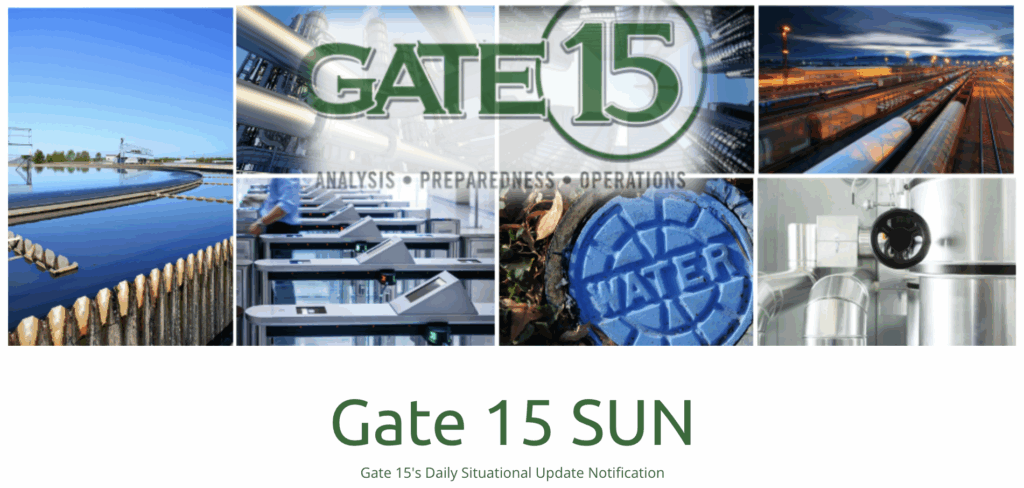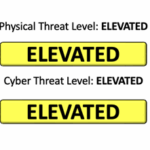
Faith-Based Daily Awareness Post 6 October 2025
Faith-Based Security Headlines
These updates are shared to help raise the situational awareness of Faith-Based organizations to best defend against and mitigate the impacts from all-hazards threats including physical security, cybersecurity, and natural disasters.
More than Half of Jewish Americans Experienced Antisemitism in Past Year and Believe Antisemitism is a Normal Jewish Experience, New ADL-Jewish Federations of North America Study Shows
More than half (55%) of Jewish Americans reported experiencing some form of antisemitism in the past 12 months, and a similar percentage share that antisemitism has become a “normal” part of Jewish life in the U.S. Around one in five respondents said they had been physically assaulted, threatened, or verbally harassed because of their Jewish identity; over one-third reported witnessing incidents of actual or threatened antisemitic violence. The survey also documents significant anxiety and behavioral changes: 79% of respondents said they are concerned about antisemitism, and 48% have taken steps to increase personal security. Furthermore, about 20% of those who formerly wore visible symbols of Jewish identity said they no longer do, demonstrating shifts in outward religious expression linked to safety concerns. Despite the prevalence of antisemitic experiences, many respondents also reported a reaffirmation of their Jewish identity: those who directly experienced antisemitism often responded with deeper engagement in community life, heightened spiritual commitment, or a reprioritization of values.
Analyst Comments: The ADL and Jewish Federations reports shows a troubling normalization of antisemitism in American life, revealing both the persistence and emotional tool of these experiences on Jewish communities. The findings pointing to a dual trend: rising fear and heightened resilience. Over half of respondents view antisemitic as a “normal” part of Jewish identity illustrating how bias and threat have become embedded and have created behavioral and security issues. The data also highlights a counteract of empowerment, as many respondents have responded to hate by strengthening their engagement in community and faith.
Security Trends in Our Synagogues: What We Learned from a Recent Survey
A recent United Synagogue of Conservative Judaism (USCJ) survey of 52 synagogues leaders offers a snapshot of evolving security practices. All respondents reported that their congregations hire some form of security, most commonly during major services and events, and seven go further by having protection any time the building is open. Nearly all (50 of 52) use armed guards or off-duty police officers, and a few also rely on armed volunteers. Many congregations are moving toward more formalized security structures: ten have a dedicated security coordination, while others assign security oversight to existing staff or leaders. Surveillance systems are widely used, 45 respondents said their facilities are monitored by cameras, many operating 24/7. The cost of security is often handled as a separate line item in budgets; some congregations fold it into membership dues, and a few charge extra for events to help cover expenses. Overall, the findings suggest that security is now viewed as a baseline expectation in synagogue life, though many congregations still face the tension between professionalizing security and managing limited resources.
Analyst Comments: The survey highlights a growing institutionalization of security across U.S. synagogues, reflecting both heightened awareness of threats and the normalization of protective measures within faith-based environments. The findings show a near-universal use of armed security and surveillance as well as the disparities in resources that smaller congregations may struggle to sustain. This then can lead to uneven security landscape but with collaboration among congregations, sharing of best practices, and pursuing federal or nonprofit grant programs are able to enhance safety without overburdening members financially. FB-ISAO provides a helpful guidance on Standing Up Teams to assist congregations in organization and coordinating effective security and preparedness efforts.
Create and Use Strong Passwords
As we continue into Cybersecurity Awareness Month (CAM) the National Cybersecurity Alliance (NCA) wants to encourage the public to create and use strong passwords. One of the best tool to mitigate cyber risks from threat actors is creating, storing, and managing passwords properly. The NCA recommend three guiding principles for strong passwords: long, unique, and complex. It also encourages enabling multi-factor authentication (MFA) wherever possible to add an extra layer of security. The article argues that routine password changes are unnecessary if passwords are already strong, unless there’s suspicion of a breach or compromise. It points out how password managers help by securely generating and storing strong passwords for many accounts, so a user only needs to remember a single master password. Finally, it introduces “passkeys” a newer alternative to passwords using devices and biometric and urges readers to begin gradually strengthening their password habits using these tools and strategies.
Analyst Comments: The StaySafeOnline article reinforces fundamental cybersecurity hygiene’s by focusing on password strength and management. The guidance aligns with best practices from organizations like CISA particularly the emphasis on using long, unique passwords, and implementing MFA. The article’s promotion of password managers reflects a practical response to “password fatigue”, helping reduce risky behaviors like reuse or simple patterns. Overall, the article serves as a reminder that effective credential management remains central to both personal and organizational cybersecurity resilience. The FB-ISAO is a CAM Champion, and we encourage member organizations to be as well, to help spread the message as widely as possible.
More Faith-Based Stories
- DC Police Arrest Man For Allegedly Having Molotov Cocktail Outside Service For Supreme Court Justices
- 4 arrested in shooting death at Midvale church parking lot
- Man wanted in Williamson County church burglary
- Two taken to hospital after stove explodes at Upstate church
- Slurs, stereotypes and violence have long plagued members of the Mormon faith
- Black Catholic Leader Condemns Threats, ‘Loss of Civility’ After Kirk’s Assassination
- Montgomery church leader was ministering prisoners when arrested on child pornography charge: Pct. 3
- Judge temporarily blocks use of National Guard in Portland
- Massachusetts sues Trump admin. over $6.9M homeland security funding cuts
- US Department of War reduces cybersecurity training, tells soldiers to focus on their mission
- Leak suggests US government is fibbing over FEMA security failings
- Judge Diane Goodstein’s Home Burns to Ground After Ruling Against Trump
- Government Shutdown: What It Means for CRE
- Freeze Warnings For Over a Million in 11 States as Temperatures Plummet
- Manchester Incident
- Mysterious drone flights in NATO airspace have caused alarm across Europe. Here’s what we know
- Yes, Mormon Church Shooter Did Wear a Trump T-Shirt
- LinkedIn sues software company allegedly scraping data from millions of profiles
More Security-Focused Content

The FB-ISAO’s sponsor Gate 15 publishes a daily newsletter called the SUN. Curated from their open source intelligence collection process, the SUN informs leaders and analysts with the critical news of the day and provides a holistic look at the current global, all-hazards threat environment. Ahead of the daily news cycle, the SUN allows current situational awareness into the topics that will impact your organization.


